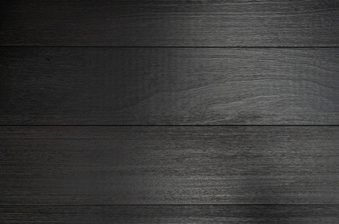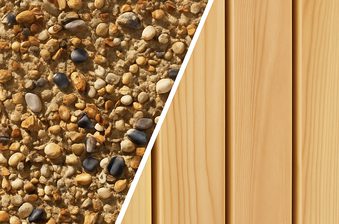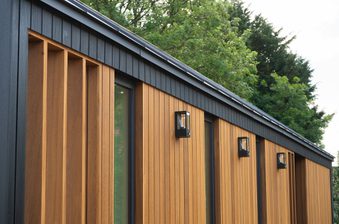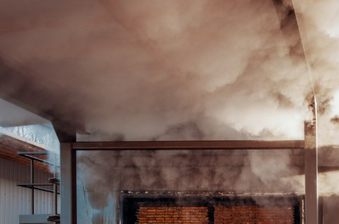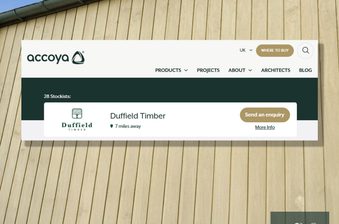Keep your Siberian Larch performing at its very best for as long as possible by choosing one of these treatment options.
Despite its superb natural outdoor durability, the outdoor elements can take their toll on Siberian Larch.
Moisture and the sun will eventually cause your once-golden larch to turn a silvery-grey. Moisture and wood-decaying fungi can also cause a number of problems, including warping, splitting and rot.
This weathering process happens to all natural materials, but there are things we can do to drastically slow things down and extend the longevity of your larch cladding, decking or fencing.
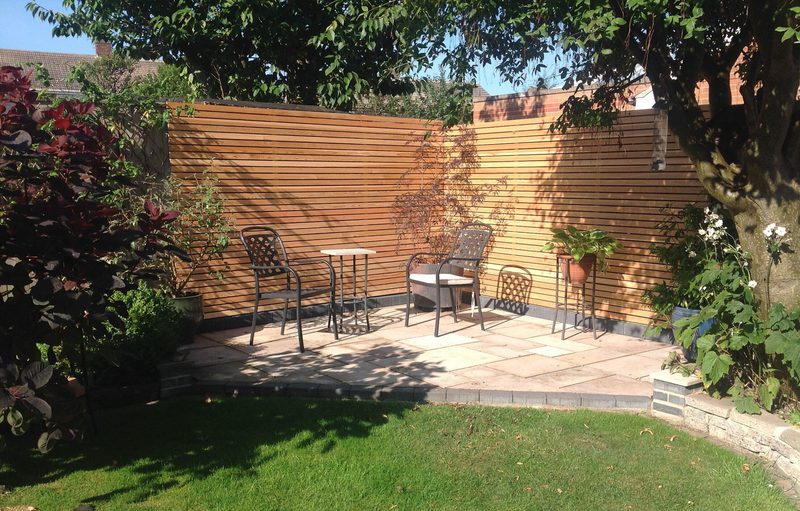
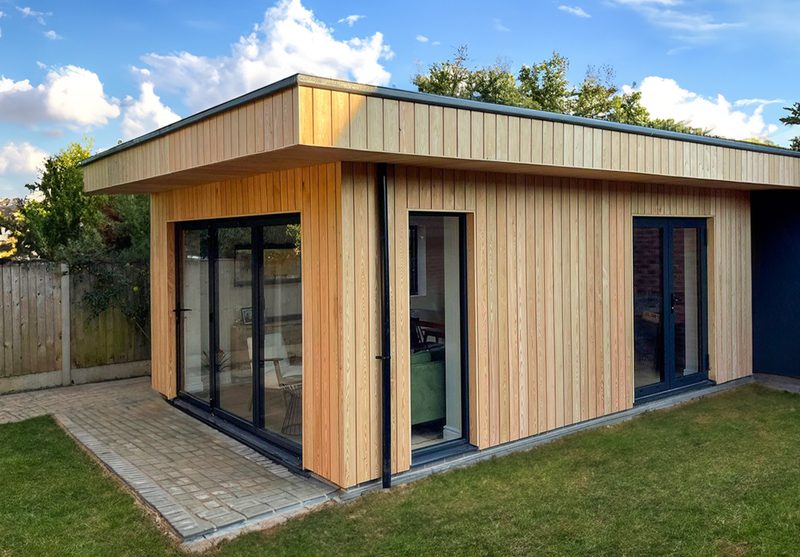
The best finishes for larch wood cladding, decking & fencing
There are a range of fantastic oils and stains on the market that can protect your larch cladding from the destructive outdoor forces it encounters.
These vary in colour change and level of protection provided, but we’ve grouped them into three broad categories — clear, semi-transparent and solid — as well as given a few examples of products you might want to consider.
1. Water-repellent oils and preservative — for good protection and virtually no colour change
First up — virtually clear treatments. With these, your larch cladding will have a totally natural look whilst being protected from water and its associated damage, such as fungal attack, warping and splitting.
Over time, your larch cladding will still weather to a silvery-grey, but these types of oils will slow the process down and help to avoid uneven greying. Depending on exposure, these finishes typically need a top-up every one-to-two years.
There are many types of product on the market, but a great example of a versatile, clear waterproof protective treatment for Siberian Larch cladding is Owatrol H4 Wood.
If you’re treating some new Siberian Larch, another excellent product is Owatrol Seasonite. This helps to stabilise the wood when it’s most at risk to the effects of moisture, during its early life and first winter. It allows the wood to start weathering naturally and prepares it for further treatment after 6–9 months.
2. Semi-transparent stain — for good protection, with slight colour change
Looking to stop your larch going grey? A high-quality, semi-transparent stain represents a good balance between protection and retaining its sought-after yellow-brown natural beauty. Depending on the tint chosen, these products can even enhance the natural beauty and grain or your timber.
Semi-transparent stains provide UV and water protection, penetrating the wood to prevent growth of wood-decaying fungi. There are a wide range of finishes on offer; for a natural, water-based semi-transparent stain, opt for a quality product like Owatrol Aquadecks. This will provide a slight change in colour. This doesn’t form a film, guarding against peeling and flaking.
If you’re after something even more powerful for your larch cladding, an oil-based semi-transparent stain like will provide even deeper protection. Owatrol Textrol HES is a very popular choice, available in a range of tints from almost clear to charcoal. Again, opt for something non-film forming.
3. Solid-colour stain — for maximum protection, with complete colour change
If you’re looking to take full creative control over the colour of your finished project, a solid-colour wood stain will do the trick. It will also provide exceptional protection for your wood.
These are available in a huge variety of colours, and offer the most robust, long-lasting protection from the elements at the expense of concealing the wood’s natural colour and grain.
… or no finish at all!
Bear in mind that it’s possible to leave your Siberian Larch cladding untreated, allowing it to age gracefully. It has good dimensional stability and high resin content, making it naturally durable.
This option is particularly popular with designers wanting to emphasise and celebrate the natural (but imperfect) beauty of materials used, whilst creating a versatile monochrome backdrop for their outdoor space.
To help with the process, it’s still possible to apply a clear waterproofing oil (see point 1 above) in order to attain that sought-after grey look in a more controlled manner, avoiding the danger of splitting and warping as well as uneven weathering.
If the ‘weathered’ look is something that appeals, check out our article about the trend for grey cladding, with plenty of design inspiration!
Over time, Siberian Larch naturally turns to a stunning silvery-grey colour. A woodcare finish will protect the wood from damage whilst slowing this process down to varying degrees, depending on the product chosen.
How to treat your Siberian Larch: FAQ
Do I need to prepare my Siberian Larch for treatment?
Before treatment, your larch should be free of any coatings or stains. If you’re working with a new product, then this isn’t a consideration. However, if you’re giving some older larch a new lease of life, then a little preparation will be necessary.
To restore grey larch to its original colour, look for a wood cleaner and brightening product, like Owatrol Net-Trol. Without damaging the natural fibres of the wood, a product like this can do away with the weathered look, reviving your larch’s natural yellow-golden brown hues.
If your larch cladding is a little worse for wear and has older finishes, you can restore it using a heavy duty clean and restore product, like Owatrol Prepdeck. This will remove all stains, marks and pre-existing finishes, preparing the cladding for treatment.
After application of any restoration products, allow your cladding to air before applying your chosen treatment. Applying a finish to moist wood is a recipe for coating failure, so make sure your timber is completely dry.
What tool/applicator should I use to apply my treatment?
For a consistent, quality coating, we’d recommend taking the time to apply your finishes using a large, soft bristle brush (rather than a pump sprayer or roller). Brushes allow the treatment to work its way evenly into the wood; be sure to allow the finish to flood the wood in a flowing coat, following the grain.
Siberian Larch is a dense softwood, which can make treatment slightly more challenging than for many other species. Making sure any exposed ends are sealed is important; one tip is to allow the wood to stand in a bucket containing the product whilst it is being treated.
How many coats do I need?
The product manufacturer’s guidelines should be followed at all times and will indicate whether to apply a second or third coat. Usually, secondary coatings should be applied before the preceding coat is totally dry.
Should I treat my larch cladding, decking or fencing before installation?
For the best overall protection, finishes are best applied before the project is installed, but it is possible to treat something that’s already in place.
What time of day or year should I treat my larch cladding, decking or fencing?
Starting in the morning will allow plenty of time if you need to apply several coatings. You can’t go wrong with a mild, dry spring or summer’s day, or early autumn at a push. Try to avoid days when it’s too hot, cold or damp (humidity can increase chances of failure).
Tips for ongoing maintenance of Siberian Larch
Whilst no natural product like timber is maintenance free, keeping your installed Siberian Larch in tip-top condition is fairly simple. A gentle clean with warm, soapy water and soft sponge around twice a year will remove the worst of the dirt, preventing any rot-causing build ups.
Over time, depending on the amount of UV, rain and ice your Siberian Larch cladding is exposed to, you may notice that your finish is wearing thin. At this point, a gentle clean and treatment reapplication (using the steps above) will keep your larch looking fantastic for years to come.
Re-applying treatment every two to three years is usually a suitable amount of time; check your product guidelines for more detail here. Transparent stains and oils usually need more frequent reapplication than their solid counterparts.
How long does larch cladding, decking or fencing last?
This depends on the quality of installation, level of care, exposure to the elements and amount of use. However, if you keep on top of cleaning, treating and maintaining your larch at timely intervals and avoid any drastic volume of damage, expect over 50 years of service life.
(By the way, if you’re working on installation of a new project, always opt for stainless steel fixings. These minimise rust formation and staining. The use of non-stainless steel fixings results in purple-black ‘bleeding’ over time, which is impossible to remove.)
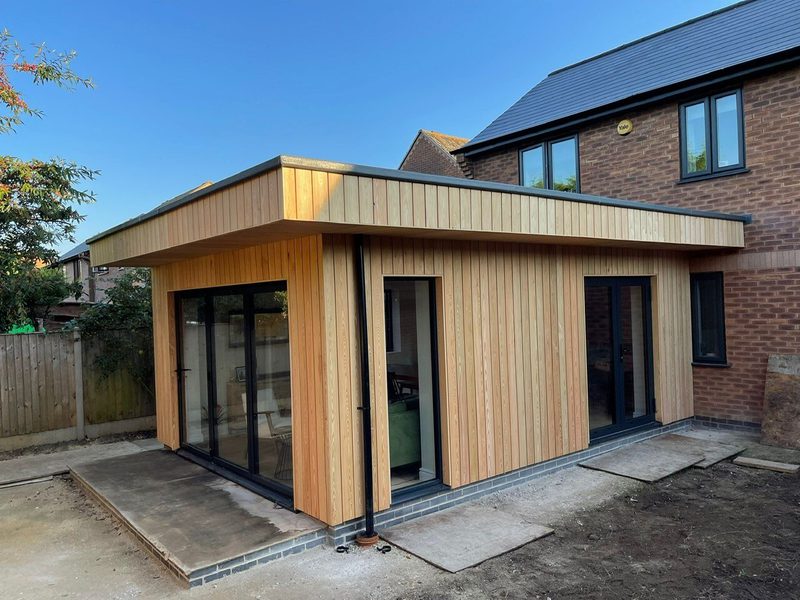
Duffield Timber: your Siberian Larch specialists
Larch beyond saving? Start a new project today by exploring our Siberian Larch cladding, fencing and decking ranges — before grabbing your preferred woodcare treatment, of course.
All of our products are machined to profile on site from quality timber, sustainably imported from across the world. Use the button below or message us through our contact page to discuss your next project.

